Events
| Name | organizer | Where |
|---|---|---|
| MBCC “Doing Business with Mongolia seminar and Christmas Receptiom” Dec 10. 2025 London UK | MBCCI | London UK Goodman LLC |
NEWS
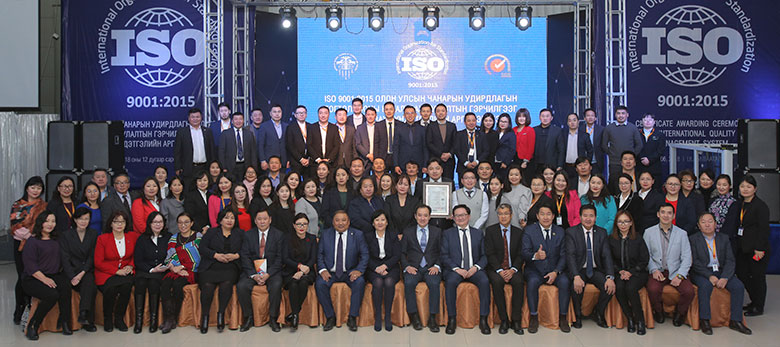
MNCCI awarded ISO 9001:2015 certification www.montsame.mn
Ulaanbaatar /MONTSAME/ The Mongolian National Chamber of Commerce and Industry (MNCCI) was awarded with the ISO 9001:2015 certification, certified by SGS company on December 6. Present at the ceremony were Foreign Minister D.Tsogtbaatar, Head of the Mongolian Agency for Standardization and Metrology (MASM) G.Gantumur, Board Members of MNCCI, businesspeople as well as executives and all staff of the national chamber. SGS is a multinational company headquartered in Geneva, Switzerland which provides inspection, verification, testing and certification services. It has 840 branches and over 320 laboratories in some 140 countries worldwide.
As an organization that makes business environment favorable and provides business advocacy, MNCCI has been working towards introducing quality management system to companies and making business people understand the system’s value since 2006. Between 2009 and 2012, the national chamber implemented consulting and training programs in 18 companies, of which four have introduced ISO 9001 standards to their operations and certified by national and international organizations. In 2015, a working group on introduction of quality management system was set up at MNCCI and began introducing the standard to its operation step by step with involvement of all executives and staff.

Carlos Ghosn: Former Nissan chair charged with financial misconduct www.bbc.com
Japanese prosecutors have charged former Nissan chairman Carlos Ghosn with financial misconduct, Japanese media report.
He was arrested in November on accusations he under-reported his salary and used company assets for personal use.
Mr Ghosn, who headed an alliance of Renault, Nissan and Mitsubishi, has previously denied the allegations.
Media reports suggested he could be re-arrested on a separate charge.
That would see him detained for another 20 days for questioning.
On Monday, he was charged with making a mis-statement on Nissan's annual securities report.
Brazil-born Mr Ghosn, aged 64, was the architect of the Renault-Nissan alliance, and brought Mitsubishi on board in 2016. He has in the past been hailed a hero in Japan for turning around the ailing Nissan.
Nissan and and Mitsubishi both sacked Mr Ghosn as chairman after the arrest last month.
Renault said at the time Mr Ghosn would remain as its chairman and chief executive, but has appointed a temporary deputy chief executive to take over the running of the firm.
Despite selling fewer vehicles, Renault has a 43% shareholding in Nissan, while Nissan's stake in Renault is only 15%.
Nissan holds a 34% stake in Mitsubishi, but has effective control of the company.

Consultative meeting of Foreign Ministries of Mongolia and Russia held www.montsame.mn
Ulaanbaatar /MONTSAME/ The 16th consultative meeting between the Ministries of Foreign Affairs of Mongolia and the Russian Federation was held in Moscow on December 7.
The delegations were led by L.Munkhtushig, Acting Head of the Consular Department of the Ministry of Foreign Affairs of Mongolia, and N.M.Latynov, Deputy Head of the Consular Department of the MFA of Russia respectively. Representatives of Mongolian Embassy in Russia, Consulates General in Ulan-Ude, Irkutsk and Kyzyl were present at the meeting.
During the consultative meeting, the parties assessed bilateral relations and cooperation, exchanging views on the matters of protecting citizens' interests including elimination of barriers related to the entry of foreign nationals and permits to reside in the two countries, and agreed to take appropriate actions on those matters.
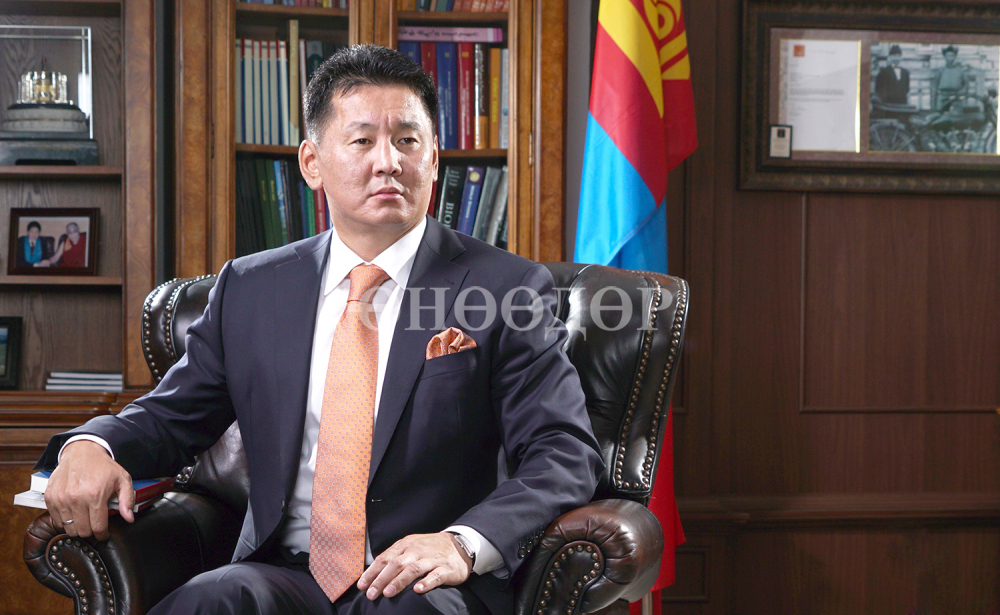
Prime Minister to visit Japan on December 12-16 www.montsame.mn
Ulaanbaatar /MONTSAME/ Prime Minister U.Khurelsukh is to pay a visit to Japan on December 12-16. This year, the Government head visited the Republic of Korea, the People’s Republic of China and the United States of America.
During the visit, Prime Minister U.Khurelsukh will sign agreements targeted to strengthening relations and cooperation as well as enhancing social and economic ties between the two countries.
It is worth noting that Foreign Minister D.Tsogtbaatar made a visit to Japan this February and during the visit, the Foreign Minister of Japan informed him that the Government of Japan decided to develop a Master Plan for value-added production development in Mongolia’s agricultural sector.

China summons US, Canadian ambassadors in 'strong protest ' over Huawei CFO's arrest www.cnn.com
The Chinese Foreign Ministry is summoning the US and Canadian ambassadors in protest over the detention of a Huawei executive in Vancouver, describing it as "lawless" and "extremely vicious."
The tech giant's chief financial officer, Meng Wanzhou, was arrested December 1 and faces extradition to the United States, where she is accused of helping Huawei circumvent US sanctions on Iran.
In a statement on Sunday, China's vice minister of foreign affairs, Le Yucheng, said the US ambassador to China, Terry Branstad, is being summoned over Beijing's "strong protest against the US's unreasonable direction to Canada of detaining the Huawei executive." Le said China would like the United States to revoke the arrest warrant against Meng and allow her to be freed.
In a statement Saturday summoning Canadian Ambassador to China John McCallum, Le said Meng's arrest "severely violated the Chinese citizen's legal and legitimate rights and interests, it is lawless, reasonless and ruthless, and it is extremely vicious."
Situating the headquarters of this regional newspaper in a hub that skilfully combines education, business, creativity and innovation helps it compete.
The statement also warned Canada of "serious consequences" if it doesn't release Meng.
China strongly urges Canada to "release the detainee immediately and earnestly protest the person's legal and legitimate rights and interests, otherwise it will definitely have serious consequences, and the Canadian side will have to bear the full responsibility for it," Le said in the statement.
Meng is believed to have helped Huawei circumvent US sanctions on Iran by telling financial institutions that a Huawei subsidiary was a separate company, Canadian prosecutors said at a hearing Friday to determine whether Meng should be released on bail.
Her lawyer said that she has ties to Canada and is not a flight risk. The judge, after hearing arguments from Meng's lawyer and prosecutors, did not rule on bail. The hearing will resume Monday at 1 p.m. ET.
Previously, details surrounding why Meng, 46, had been detained were limited due to a press ban. A judge had accepted Meng's request to bar both police and prosecutors from releasing information about the case prior to the hearing. The ban was lifted on Friday.
A judge in the US District Court for the Eastern District of New York issued a warrant for Meng's arrest on August 22, it was revealed at the hearing Friday. She was arrested on December 1.
Earlier this week, Huawei said Meng was detained by Canadian authorities on behalf of the United States when she was transferring flights in Canada.
In a statement after Friday's hearing in Canada, Huawei said: "We will continue to follow the bail hearing on Monday. We have every confidence that the Canadian and US legal systems will reach the right conclusion."
The company has said it was "not aware of any wrongdoing by Ms. Meng" and that it "complies with all applicable laws and regulations where it operates."
In addition to her role as CFO, Meng serves as deputy chairwoman of Huawei's board. She is the daughter of Huawei's founder, Ren Zhengfei.
Meng's attorney said she would not breach a court order because doing so would embarrass her personally, and would also humiliate her father, Huawei and China itself. He added that the case against Meng had not been fully laid out, even though the US had signed off on her arrest warrant months ago.
"This isn't some last minute thing," he said.
Meng did everything she could to be transparent with Huawei's banking partners, and the company always worked to ensure its compliance with sanctions law, her lawyer continued.
Arrest came as US and China reached trade truce
Huawei is one of the world's biggest makers of smartphones and networking equipment and one of China's best-known companies. It is central to the country's ambitions to become a tech superpower.
But concerns that Huawei devices pose national security risks have hurt its ability to grow abroad.
The company has been repeatedly singled out by officials in the United States. US intelligence agencies have said American citizens shouldn't use Huawei phones, and US government agencies are banned from buying the company's equipment.
Huawei is a "bad actor," White House trade adviser Peter Navarro told CNN on Friday.
Navarro admitted that is was "unusual" that Meng's arrest came just as US President Donald Trump and Chinese President Xi Jinping reached a trade truce in Argentina, but said the government's actions are "legitimate."
"Let's look at what the indictment says and let the [Justice Department] do its thing," he said.
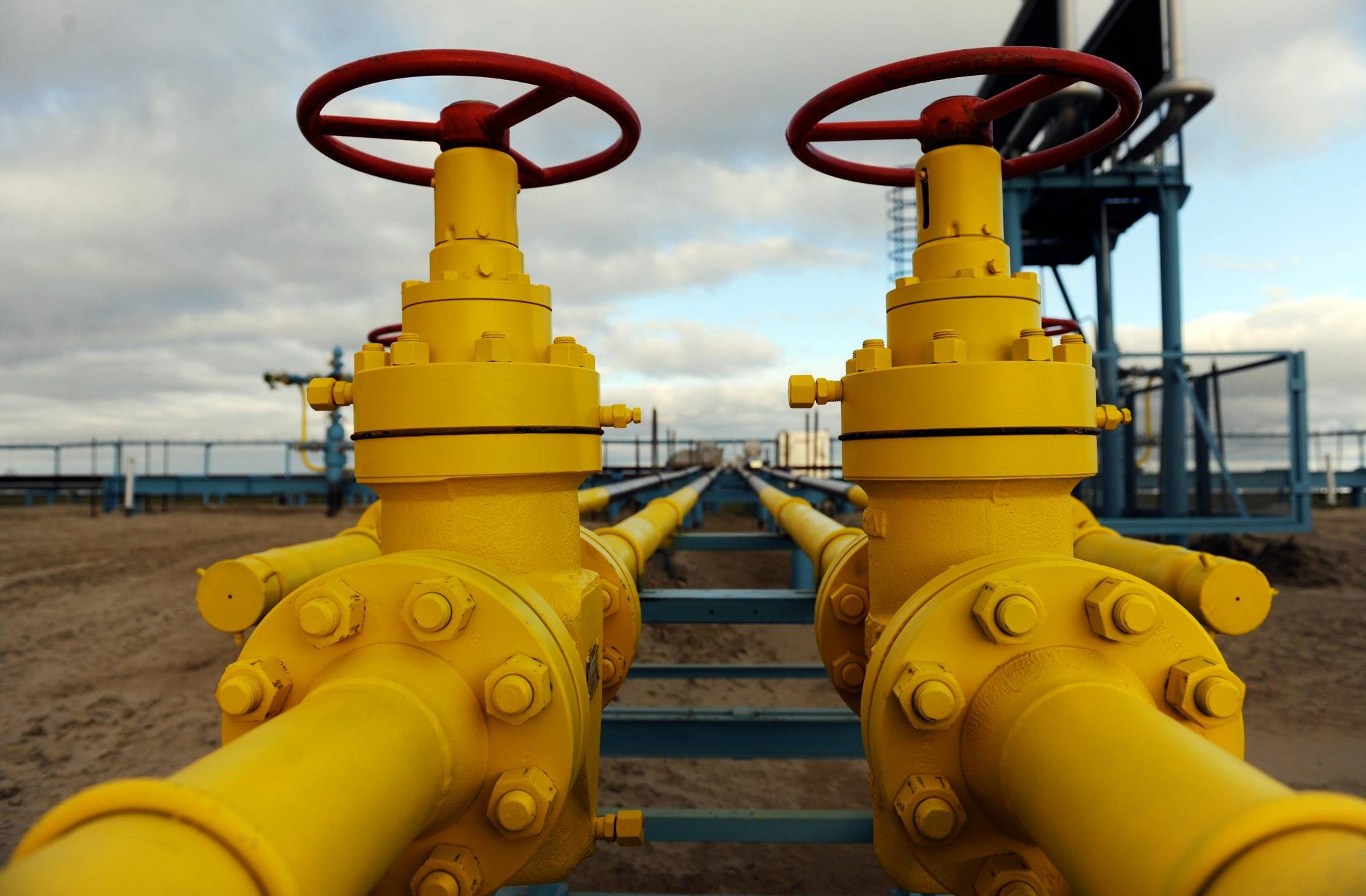
Gazprom kicks major Arctic gas field into maximum overdrive www.rt.com
Russian gas major Gazprom has launched the final unit of a major national gas field in the Arctic that is projected to produce for more than 100 years.
It took the company 10 years to build the whole infrastructure in the harsh northern conditions. The unique Bovanenkovo oil and gas condensate field will now be able to work at full capacity, increasing it to the target level of 115 billion cubic meters of gas per year. This is almost half of what Gazprom provides for the domestic market and almost half its exports, according to Russian President Vladimir Putin.
“The scale is impressive,” Putin told Gazprom’s CEO, Alexey Miller, as he joined the launching ceremony via a conference call on Wednesday.
The works on the key Arctic facility began in 2008, and the company managed to create a powerful industrial complex at the field as well as all necessary infrastructure, including a railroad and an airport. Two previous units began operations in 2012 and in 2014.
Gas production operations at the field are to continue at the facility for more than 100 years – until 2128. The Yamal gas production center, which includes Bovanenkovo field, has the “primary role in the national gas industry throughout the 21st century,” according to Gazprom.
The company also said it connected the Ukhta-Torzhok 2 gas pipeline, designed to pump gas into the Nord Stream 2 to Germany, to the key route of Russia’s Unified Gas Supply System (UGSS). The new gas pipeline is 970 kilometers (602 miles) long and can take some 45 billion cubic meters of gas per year.
Bovanenkovo is the backbone of the Yamal gas production center and the largest field in the area in terms of explored gas reserves. At the start of development in 2012, its reserves were estimated at 4.9 trillion cubic meters. Last year, gas production from the facility amounted to 82.8 billion cubic meters.

Fuel prices reduced in Mongolia www.news.mn
The price of fuel imports from Russia have finally started to fall. The decrease began at the beginning of the month. This is also reflected on the global markets where the cost of a barrel of oil price has also fallen.
Minister of Mining and Heavy Industries D.Sumiyabazar held a meeting with fuel importers and agreed to cut fuel prices. From Dec 07, the price of a litre of A-92 petrol was reduced by MNT 100 at Mongolian petrol stations. However, it should be remembered that fuel prices increased by MNT 350 in 2018 after importers raised their prices some five times.
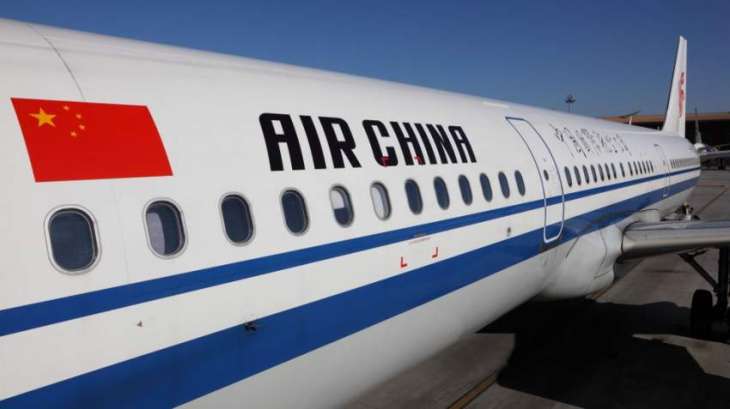
Air China Contributes To Development Of China-Mongolia Ties www.urdupoint.com
Air China as well as its Beijing-Ulan Bator direct route has contributed significantly to the promotion of tourism and people-to-people exchanges between China and Mongolia, a general manager of Air China has said. "As China-Mongolia relations and cooperation have been expanding rapidly in a wide range of areas, the number of people choosing to travel via Air China's Beijing-Ulan Bator direct route has been growing," General Manager of Air China in Ulan Bator Otgon Amgalan told Xinhua on Friday.
The general manager made the remarks during a promotion event of the company which aimed at further increasing exchanges between the two countries. "Mongolia is one of China's close neighbors. Also, the country is one of the main countries along the Belt and Road Initiative (BRI)," said Amgalan, adding that the company has made great efforts to develop bilateral ties, the BRI and Mongolia's Prairie Road development initiative.
Meanwhile, the general manager said that Air China has played a positive role in fostering humanitarian relations between the two countries by offering services to poor Mongolian patients.
The company recently provided half-price tickets for 28 Mongolian children suffering from congenital heart disease who went to Beijing to receive free surgeries, and their parents.
"Next year, our two countries are set to celebrate the 70th anniversary of the establishment of diplomatic relations," said Amgalan. "We are ready to do everything possible to make more contributions to the further development of bilateral cooperation between the two countries."Air China has commenced its operations in Mongolia in 1991 by starting its first direct flight from Ulan Bator to Beijing.
Last year, more than 95,000 passengers took the Beijing-Ulan Bator flight, up more than 30 percent compared with five years ago.

Mongolia, DPRK agree to further expand ties www.xinhuanet.com
ULAN BATOR, Dec. 9 (Xinhua) -- Mongolian Foreign Minister Damdin Tsogtbaatar and his Democratic People's Republic of Korea (DPRK) counterpart, Ri Yong Ho, have agreed to further strengthen bilateral ties between their countries, the Mongolian Foreign Ministry said Sunday.
Ri arrived in the Mongolian capital of Ulan Bator on Saturday for a two-day visit at the invitation of the Mongolian foreign minister.
The two foreign ministers exchanged views on expanding bilateral cooperation at the regional and international levels and in various sectors such as politics, trade, sports and education, and other issues of mutual concern, the ministry said in a statement.
During the talks, Tsogtbaatar said that all relevant parties should cooperate closely to realize a completely denuclearized Korean Peninsula and solve any controversial issues in the region through negotiations.
For his part, Ri said that the DPRK adheres to the denuclearization of the peninsula, noting that strengthening mutual trust is now crucial in the region.
Mongolia and the DPRK established diplomatic ties in 1948.
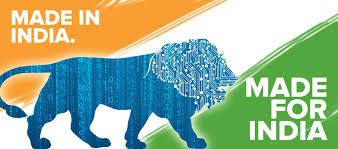
TRADE AND INVESTMENT OPPORTUNITIES IN INDIA www.mongolianbusinessdatabase.mn
Embassy of India in Ulaanbaatar in collaboration with Mongolian National Chamber of Commerce and Industry [MNCCI] is organizing a Seminar on “Trade and Investment opportunities in India” on 12th December, 2018.
The objective of the Seminar is to give the opportunity to entrepreneurs of Mongolia to look India for trade and Investment in the sector of Agriculture, Dairy, Pharmaceuticals, Tourism, Education, and Spices, Tea, Coffee etc. This Seminar will give opportunities to Mongolian companies to obtain information on Indian Economy, Business opportunities available in India, Trade and Investment environment in Mongolia as well as for the local entrepreneurs and organizations to learn more about Indian trade with Mongolia. You are kindly requested to disseminate this information among members of your organization and encourage them to participate in the event. Half Day event will be followed by Indian lunch.
You may register to the Seminar by email at commerce.ulaan@mea.gov.in & or by calling at +976-70132248 [Mr. Boldoo, Marketing Assistant] and for any other information related to the Summit.
Venue: Mongolian National Chamber of Commerce and Industry,
1st floor Auditorium Date: 12th of December, 2018. 1000 hrs
- «
- 1
- 2
- 3
- 4
- 5
- 6
- 7
- 8
- 9
- 10
- 11
- 12
- 13
- 14
- 15
- 16
- 17
- 18
- 19
- 20
- 21
- 22
- 23
- 24
- 25
- 26
- 27
- 28
- 29
- 30
- 31
- 32
- 33
- 34
- 35
- 36
- 37
- 38
- 39
- 40
- 41
- 42
- 43
- 44
- 45
- 46
- 47
- 48
- 49
- 50
- 51
- 52
- 53
- 54
- 55
- 56
- 57
- 58
- 59
- 60
- 61
- 62
- 63
- 64
- 65
- 66
- 67
- 68
- 69
- 70
- 71
- 72
- 73
- 74
- 75
- 76
- 77
- 78
- 79
- 80
- 81
- 82
- 83
- 84
- 85
- 86
- 87
- 88
- 89
- 90
- 91
- 92
- 93
- 94
- 95
- 96
- 97
- 98
- 99
- 100
- 101
- 102
- 103
- 104
- 105
- 106
- 107
- 108
- 109
- 110
- 111
- 112
- 113
- 114
- 115
- 116
- 117
- 118
- 119
- 120
- 121
- 122
- 123
- 124
- 125
- 126
- 127
- 128
- 129
- 130
- 131
- 132
- 133
- 134
- 135
- 136
- 137
- 138
- 139
- 140
- 141
- 142
- 143
- 144
- 145
- 146
- 147
- 148
- 149
- 150
- 151
- 152
- 153
- 154
- 155
- 156
- 157
- 158
- 159
- 160
- 161
- 162
- 163
- 164
- 165
- 166
- 167
- 168
- 169
- 170
- 171
- 172
- 173
- 174
- 175
- 176
- 177
- 178
- 179
- 180
- 181
- 182
- 183
- 184
- 185
- 186
- 187
- 188
- 189
- 190
- 191
- 192
- 193
- 194
- 195
- 196
- 197
- 198
- 199
- 200
- 201
- 202
- 203
- 204
- 205
- 206
- 207
- 208
- 209
- 210
- 211
- 212
- 213
- 214
- 215
- 216
- 217
- 218
- 219
- 220
- 221
- 222
- 223
- 224
- 225
- 226
- 227
- 228
- 229
- 230
- 231
- 232
- 233
- 234
- 235
- 236
- 237
- 238
- 239
- 240
- 241
- 242
- 243
- 244
- 245
- 246
- 247
- 248
- 249
- 250
- 251
- 252
- 253
- 254
- 255
- 256
- 257
- 258
- 259
- 260
- 261
- 262
- 263
- 264
- 265
- 266
- 267
- 268
- 269
- 270
- 271
- 272
- 273
- 274
- 275
- 276
- 277
- 278
- 279
- 280
- 281
- 282
- 283
- 284
- 285
- 286
- 287
- 288
- 289
- 290
- 291
- 292
- 293
- 294
- 295
- 296
- 297
- 298
- 299
- 300
- 301
- 302
- 303
- 304
- 305
- 306
- 307
- 308
- 309
- 310
- 311
- 312
- 313
- 314
- 315
- 316
- 317
- 318
- 319
- 320
- 321
- 322
- 323
- 324
- 325
- 326
- 327
- 328
- 329
- 330
- 331
- 332
- 333
- 334
- 335
- 336
- 337
- 338
- 339
- 340
- 341
- 342
- 343
- 344
- 345
- 346
- 347
- 348
- 349
- 350
- 351
- 352
- 353
- 354
- 355
- 356
- 357
- 358
- 359
- 360
- 361
- 362
- 363
- 364
- 365
- 366
- 367
- 368
- 369
- 370
- 371
- 372
- 373
- 374
- 375
- 376
- 377
- 378
- 379
- 380
- 381
- 382
- 383
- 384
- 385
- 386
- 387
- 388
- 389
- 390
- 391
- 392
- 393
- 394
- 395
- 396
- 397
- 398
- 399
- 400
- 401
- 402
- 403
- 404
- 405
- 406
- 407
- 408
- 409
- 410
- 411
- 412
- 413
- 414
- 415
- 416
- 417
- 418
- 419
- 420
- 421
- 422
- 423
- 424
- 425
- 426
- 427
- 428
- 429
- 430
- 431
- 432
- 433
- 434
- 435
- 436
- 437
- 438
- 439
- 440
- 441
- 442
- 443
- 444
- 445
- 446
- 447
- 448
- 449
- 450
- 451
- 452
- 453
- 454
- 455
- 456
- 457
- 458
- 459
- 460
- 461
- 462
- 463
- 464
- 465
- 466
- 467
- 468
- 469
- 470
- 471
- 472
- 473
- 474
- 475
- 476
- 477
- 478
- 479
- 480
- 481
- 482
- 483
- 484
- 485
- 486
- 487
- 488
- 489
- 490
- 491
- 492
- 493
- 494
- 495
- 496
- 497
- 498
- 499
- 500
- 501
- 502
- 503
- 504
- 505
- 506
- 507
- 508
- 509
- 510
- 511
- 512
- 513
- 514
- 515
- 516
- 517
- 518
- 519
- 520
- 521
- 522
- 523
- 524
- 525
- 526
- 527
- 528
- 529
- 530
- 531
- 532
- 533
- 534
- 535
- 536
- 537
- 538
- 539
- 540
- 541
- 542
- 543
- 544
- 545
- 546
- 547
- 548
- 549
- 550
- 551
- 552
- 553
- 554
- 555
- 556
- 557
- 558
- 559
- 560
- 561
- 562
- 563
- 564
- 565
- 566
- 567
- 568
- 569
- 570
- 571
- 572
- 573
- 574
- 575
- 576
- 577
- 578
- 579
- 580
- 581
- 582
- 583
- 584
- 585
- 586
- 587
- 588
- 589
- 590
- 591
- 592
- 593
- 594
- 595
- 596
- 597
- 598
- 599
- 600
- 601
- 602
- 603
- 604
- 605
- 606
- 607
- 608
- 609
- 610
- 611
- 612
- 613
- 614
- 615
- 616
- 617
- 618
- 619
- 620
- 621
- 622
- 623
- 624
- 625
- 626
- 627
- 628
- 629
- 630
- 631
- 632
- 633
- 634
- 635
- 636
- 637
- 638
- 639
- 640
- 641
- 642
- 643
- 644
- 645
- 646
- 647
- 648
- 649
- 650
- 651
- 652
- 653
- 654
- 655
- 656
- 657
- 658
- 659
- 660
- 661
- 662
- 663
- 664
- 665
- 666
- 667
- 668
- 669
- 670
- 671
- 672
- 673
- 674
- 675
- 676
- 677
- 678
- 679
- 680
- 681
- 682
- 683
- 684
- 685
- 686
- 687
- 688
- 689
- 690
- 691
- 692
- 693
- 694
- 695
- 696
- 697
- 698
- 699
- 700
- 701
- 702
- 703
- 704
- 705
- 706
- 707
- 708
- 709
- 710
- 711
- 712
- 713
- 714
- 715
- 716
- 717
- 718
- 719
- 720
- 721
- 722
- 723
- 724
- 725
- 726
- 727
- 728
- 729
- 730
- 731
- 732
- 733
- 734
- 735
- 736
- 737
- 738
- 739
- 740
- 741
- 742
- 743
- 744
- 745
- 746
- 747
- 748
- 749
- 750
- 751
- 752
- 753
- 754
- 755
- 756
- 757
- 758
- 759
- 760
- 761
- 762
- 763
- 764
- 765
- 766
- 767
- 768
- 769
- 770
- 771
- 772
- 773
- 774
- 775
- 776
- 777
- 778
- 779
- 780
- 781
- 782
- 783
- 784
- 785
- 786
- 787
- 788
- 789
- 790
- 791
- 792
- 793
- 794
- 795
- 796
- 797
- 798
- 799
- 800
- 801
- 802
- 803
- 804
- 805
- 806
- 807
- 808
- 809
- 810
- 811
- 812
- 813
- 814
- 815
- 816
- 817
- 818
- 819
- 820
- 821
- 822
- 823
- 824
- 825
- 826
- 827
- 828
- 829
- 830
- 831
- 832
- 833
- 834
- 835
- 836
- 837
- 838
- 839
- 840
- 841
- 842
- 843
- 844
- 845
- 846
- 847
- 848
- 849
- 850
- 851
- 852
- 853
- 854
- 855
- 856
- 857
- 858
- 859
- 860
- 861
- 862
- 863
- 864
- 865
- 866
- 867
- 868
- 869
- 870
- 871
- 872
- 873
- 874
- 875
- 876
- 877
- 878
- 879
- 880
- 881
- 882
- 883
- 884
- 885
- 886
- 887
- 888
- 889
- 890
- 891
- 892
- 893
- 894
- 895
- 896
- 897
- 898
- 899
- 900
- 901
- 902
- 903
- 904
- 905
- 906
- 907
- 908
- 909
- 910
- 911
- 912
- 913
- 914
- 915
- 916
- 917
- 918
- 919
- 920
- 921
- 922
- 923
- 924
- 925
- 926
- 927
- 928
- 929
- 930
- 931
- 932
- 933
- 934
- 935
- 936
- 937
- 938
- 939
- 940
- 941
- 942
- 943
- 944
- 945
- 946
- 947
- 948
- 949
- 950
- 951
- 952
- 953
- 954
- 955
- 956
- 957
- 958
- 959
- 960
- 961
- 962
- 963
- 964
- 965
- 966
- 967
- 968
- 969
- 970
- 971
- 972
- 973
- 974
- 975
- 976
- 977
- 978
- 979
- 980
- 981
- 982
- 983
- 984
- 985
- 986
- 987
- 988
- 989
- 990
- 991
- 992
- 993
- 994
- 995
- 996
- 997
- 998
- 999
- 1000
- 1001
- 1002
- 1003
- 1004
- 1005
- 1006
- 1007
- 1008
- 1009
- 1010
- 1011
- 1012
- 1013
- 1014
- 1015
- 1016
- 1017
- 1018
- 1019
- 1020
- 1021
- 1022
- 1023
- 1024
- 1025
- 1026
- 1027
- 1028
- 1029
- 1030
- 1031
- 1032
- 1033
- 1034
- 1035
- 1036
- 1037
- 1038
- 1039
- 1040
- 1041
- 1042
- 1043
- 1044
- 1045
- 1046
- 1047
- 1048
- 1049
- 1050
- 1051
- 1052
- 1053
- 1054
- 1055
- 1056
- 1057
- 1058
- 1059
- 1060
- 1061
- 1062
- 1063
- 1064
- 1065
- 1066
- 1067
- 1068
- 1069
- 1070
- 1071
- 1072
- 1073
- 1074
- 1075
- 1076
- 1077
- 1078
- 1079
- 1080
- 1081
- 1082
- 1083
- 1084
- 1085
- 1086
- 1087
- 1088
- 1089
- 1090
- 1091
- 1092
- 1093
- 1094
- 1095
- 1096
- 1097
- 1098
- 1099
- 1100
- 1101
- 1102
- 1103
- 1104
- 1105
- 1106
- 1107
- 1108
- 1109
- 1110
- 1111
- 1112
- 1113
- 1114
- 1115
- 1116
- 1117
- 1118
- 1119
- 1120
- 1121
- 1122
- 1123
- 1124
- 1125
- 1126
- 1127
- 1128
- 1129
- 1130
- 1131
- 1132
- 1133
- 1134
- 1135
- 1136
- 1137
- 1138
- 1139
- 1140
- 1141
- 1142
- 1143
- 1144
- 1145
- 1146
- 1147
- 1148
- 1149
- 1150
- 1151
- 1152
- 1153
- 1154
- 1155
- 1156
- 1157
- 1158
- 1159
- 1160
- 1161
- 1162
- 1163
- 1164
- 1165
- 1166
- 1167
- 1168
- 1169
- 1170
- 1171
- 1172
- 1173
- 1174
- 1175
- 1176
- 1177
- 1178
- 1179
- 1180
- 1181
- 1182
- 1183
- 1184
- 1185
- 1186
- 1187
- 1188
- 1189
- 1190
- 1191
- 1192
- 1193
- 1194
- 1195
- 1196
- 1197
- 1198
- 1199
- 1200
- 1201
- 1202
- 1203
- 1204
- 1205
- 1206
- 1207
- 1208
- 1209
- 1210
- 1211
- 1212
- 1213
- 1214
- 1215
- 1216
- 1217
- 1218
- 1219
- 1220
- 1221
- 1222
- 1223
- 1224
- 1225
- 1226
- 1227
- 1228
- 1229
- 1230
- 1231
- 1232
- 1233
- 1234
- 1235
- 1236
- 1237
- 1238
- 1239
- 1240
- 1241
- 1242
- 1243
- 1244
- 1245
- 1246
- 1247
- 1248
- 1249
- 1250
- 1251
- 1252
- 1253
- 1254
- 1255
- 1256
- 1257
- 1258
- 1259
- 1260
- 1261
- 1262
- 1263
- 1264
- 1265
- 1266
- 1267
- 1268
- 1269
- 1270
- 1271
- 1272
- 1273
- 1274
- 1275
- 1276
- 1277
- 1278
- 1279
- 1280
- 1281
- 1282
- 1283
- 1284
- 1285
- 1286
- 1287
- 1288
- 1289
- 1290
- 1291
- 1292
- 1293
- 1294
- 1295
- 1296
- 1297
- 1298
- 1299
- 1300
- 1301
- 1302
- 1303
- 1304
- 1305
- 1306
- 1307
- 1308
- 1309
- 1310
- 1311
- 1312
- 1313
- 1314
- 1315
- 1316
- 1317
- 1318
- 1319
- 1320
- 1321
- 1322
- 1323
- 1324
- 1325
- 1326
- 1327
- 1328
- 1329
- 1330
- 1331
- 1332
- 1333
- 1334
- 1335
- 1336
- 1337
- 1338
- 1339
- 1340
- 1341
- 1342
- 1343
- 1344
- 1345
- 1346
- 1347
- 1348
- 1349
- 1350
- 1351
- 1352
- 1353
- 1354
- 1355
- 1356
- 1357
- 1358
- 1359
- 1360
- 1361
- 1362
- 1363
- 1364
- 1365
- 1366
- 1367
- 1368
- 1369
- 1370
- 1371
- 1372
- 1373
- 1374
- 1375
- 1376
- 1377
- 1378
- 1379
- 1380
- 1381
- 1382
- 1383
- 1384
- 1385
- 1386
- 1387
- 1388
- 1389
- 1390
- 1391
- 1392
- 1393
- 1394
- 1395
- 1396
- 1397
- 1398
- 1399
- 1400
- 1401
- 1402
- 1403
- 1404
- 1405
- 1406
- 1407
- 1408
- 1409
- 1410
- 1411
- 1412
- 1413
- 1414
- 1415
- 1416
- 1417
- 1418
- 1419
- 1420
- 1421
- 1422
- 1423
- 1424
- 1425
- 1426
- 1427
- 1428
- 1429
- 1430
- 1431
- 1432
- 1433
- 1434
- 1435
- 1436
- 1437
- 1438
- 1439
- 1440
- 1441
- 1442
- 1443
- 1444
- 1445
- 1446
- 1447
- 1448
- 1449
- 1450
- 1451
- 1452
- 1453
- 1454
- 1455
- 1456
- 1457
- 1458
- 1459
- 1460
- 1461
- 1462
- 1463
- 1464
- 1465
- 1466
- 1467
- 1468
- 1469
- 1470
- 1471
- 1472
- 1473
- 1474
- 1475
- 1476
- 1477
- 1478
- 1479
- 1480
- 1481
- 1482
- 1483
- 1484
- 1485
- 1486
- 1487
- 1488
- 1489
- 1490
- 1491
- 1492
- 1493
- 1494
- 1495
- 1496
- 1497
- 1498
- 1499
- 1500
- 1501
- 1502
- 1503
- 1504
- 1505
- 1506
- 1507
- 1508
- 1509
- 1510
- 1511
- 1512
- 1513
- 1514
- 1515
- 1516
- 1517
- 1518
- 1519
- 1520
- 1521
- 1522
- 1523
- 1524
- 1525
- 1526
- 1527
- 1528
- 1529
- 1530
- 1531
- 1532
- 1533
- 1534
- 1535
- 1536
- 1537
- 1538
- 1539
- 1540
- 1541
- 1542
- 1543
- 1544
- 1545
- 1546
- 1547
- 1548
- 1549
- 1550
- 1551
- 1552
- 1553
- 1554
- 1555
- 1556
- 1557
- 1558
- 1559
- 1560
- 1561
- 1562
- 1563
- 1564
- 1565
- 1566
- 1567
- 1568
- 1569
- 1570
- 1571
- 1572
- 1573
- 1574
- 1575
- 1576
- 1577
- 1578
- 1579
- 1580
- 1581
- 1582
- 1583
- 1584
- 1585
- 1586
- 1587
- 1588
- 1589
- 1590
- 1591
- 1592
- 1593
- 1594
- 1595
- 1596
- 1597
- 1598
- 1599
- 1600
- 1601
- 1602
- 1603
- 1604
- 1605
- 1606
- 1607
- 1608
- 1609
- 1610
- 1611
- 1612
- 1613
- 1614
- 1615
- 1616
- 1617
- 1618
- 1619
- 1620
- 1621
- 1622
- 1623
- 1624
- 1625
- 1626
- 1627
- 1628
- 1629
- 1630
- 1631
- 1632
- 1633
- 1634
- 1635
- 1636
- 1637
- 1638
- 1639
- 1640
- 1641
- 1642
- 1643
- 1644
- 1645
- 1646
- 1647
- 1648
- 1649
- 1650
- 1651
- 1652
- 1653
- 1654
- 1655
- 1656
- 1657
- 1658
- 1659
- 1660
- 1661
- 1662
- 1663
- 1664
- 1665
- 1666
- 1667
- 1668
- 1669
- 1670
- 1671
- 1672
- 1673
- 1674
- 1675
- 1676
- 1677
- 1678
- 1679
- 1680
- 1681
- 1682
- 1683
- 1684
- 1685
- 1686
- 1687
- 1688
- 1689
- 1690
- 1691
- 1692
- 1693
- 1694
- »






